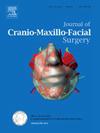Donor-site morbidity and aesthetic outcomes in patients undergoing head and neck reconstruction with anterolateral thigh or latissimus dorsi flaps: A systematic review and meta-analysis
IF 2.1
2区 医学
Q2 DENTISTRY, ORAL SURGERY & MEDICINE
引用次数: 0
Abstract
Background
Anterolateral thigh (ALT) and latissimus dorsi (LAT) flaps are workhorse flaps for head and neck reconstruction. However, evidence showing how donor-site morbidity (DSM) compares between these flaps is lacking. This systematic review and meta-analysis evaluates DSM and aesthetic outcomes with ALT and LAT flaps for head and neck reconstruction.
Methods
We reviewed articles identified in the PubMed, Web of Science, and Cochrane databases. Methodological quality was assessed using the Newcastle-Ottawa Scale and the Agency for Healthcare Research and Quality Scale. We performed a meta-analysis using fixed- and random-effects models to estimate the incidences of different DSM and dissatisfaction with the aesthetic outcome. These pooled incidences were compared between the ALT and LAT groups using Fisher exact test.
Results
We identified 82 studies including a total of 4436 patients who underwent reconstruction with an ALT flap (n = 3689) or LAT flap (n = 747). In the ALT flap group, the most prevalent DSM was paresthesia (21.2 %), followed by movement dysfunction (4.0 %), and poor wound healing (3.9 %). In the LAT group, the most prevalent DSM was hematoma (10.3 %), followed by movement dysfunction (10.1 %) and poor wound healing (8.6 %). The incidences of dissatisfaction with donor site appearance were 6.3 % in the ALT flap group and 2.4 % in the LAT flap group. Intergroup comparison of these DSM showed no statistically significant differences except a higher rate of donor site hematoma in the LAT flap (p < 0.001).
Conclusion
The results of this meta-analysis suggest that LAT flaps have higher risk of hematoma/seroma and both flaps provide acceptable donor-site aesthetics. Additional well-designed prospective clinical studies are needed to enhance our understanding of DSM with large myocutaneous flaps in the setting of head and neck reconstruction.
用大腿前外侧或背阔肌皮瓣进行头颈部重建术患者的供体部位发病率和美学结果:一项系统回顾和荟萃分析。
背景:大腿前外侧(ALT)和背阔肌(LAT)皮瓣是头颈部重建的主要皮瓣。然而,缺乏证据显示这些皮瓣之间供体部位发病率(DSM)的比较。本系统综述和荟萃分析评估了ALT和LAT皮瓣用于头颈部重建的DSM和美学结果。方法:我们回顾了PubMed、Web of Science和Cochrane数据库中的文章。采用纽卡斯尔-渥太华量表和卫生保健研究机构质量量表评估方法学质量。我们使用固定效应和随机效应模型进行了荟萃分析,以估计不同DSM的发生率和对美学结果的不满。使用Fisher精确检验比较ALT组和LAT组的合并发生率。结果:我们确定了82项研究,包括4436例接受ALT皮瓣(n = 3689)或LAT皮瓣(n = 747)重建的患者。在ALT皮瓣组中,最常见的DSM是感觉异常(21.2%),其次是运动功能障碍(4.0%)和伤口愈合不良(3.9%)。在LAT组中,最常见的DSM是血肿(10.3%),其次是运动功能障碍(10.1%)和伤口愈合不良(8.6%)。供区外观不满意发生率ALT组为6.3%,LAT组为2.4%。这些DSM组间比较显示,除了LAT皮瓣的供区血肿率更高外,没有统计学上的显著差异(p)。结论:本荟荟性分析的结果表明,LAT皮瓣有更高的血肿/血肿风险,两种皮瓣都提供了可接受的供区美学。需要更多精心设计的前瞻性临床研究来提高我们对大肌皮瓣在头颈部重建中的DSM的理解。
本文章由计算机程序翻译,如有差异,请以英文原文为准。
求助全文
约1分钟内获得全文
求助全文
来源期刊
CiteScore
5.20
自引率
22.60%
发文量
117
审稿时长
70 days
期刊介绍:
The Journal of Cranio-Maxillofacial Surgery publishes articles covering all aspects of surgery of the head, face and jaw. Specific topics covered recently have included:
• Distraction osteogenesis
• Synthetic bone substitutes
• Fibroblast growth factors
• Fetal wound healing
• Skull base surgery
• Computer-assisted surgery
• Vascularized bone grafts

 求助内容:
求助内容: 应助结果提醒方式:
应助结果提醒方式:


